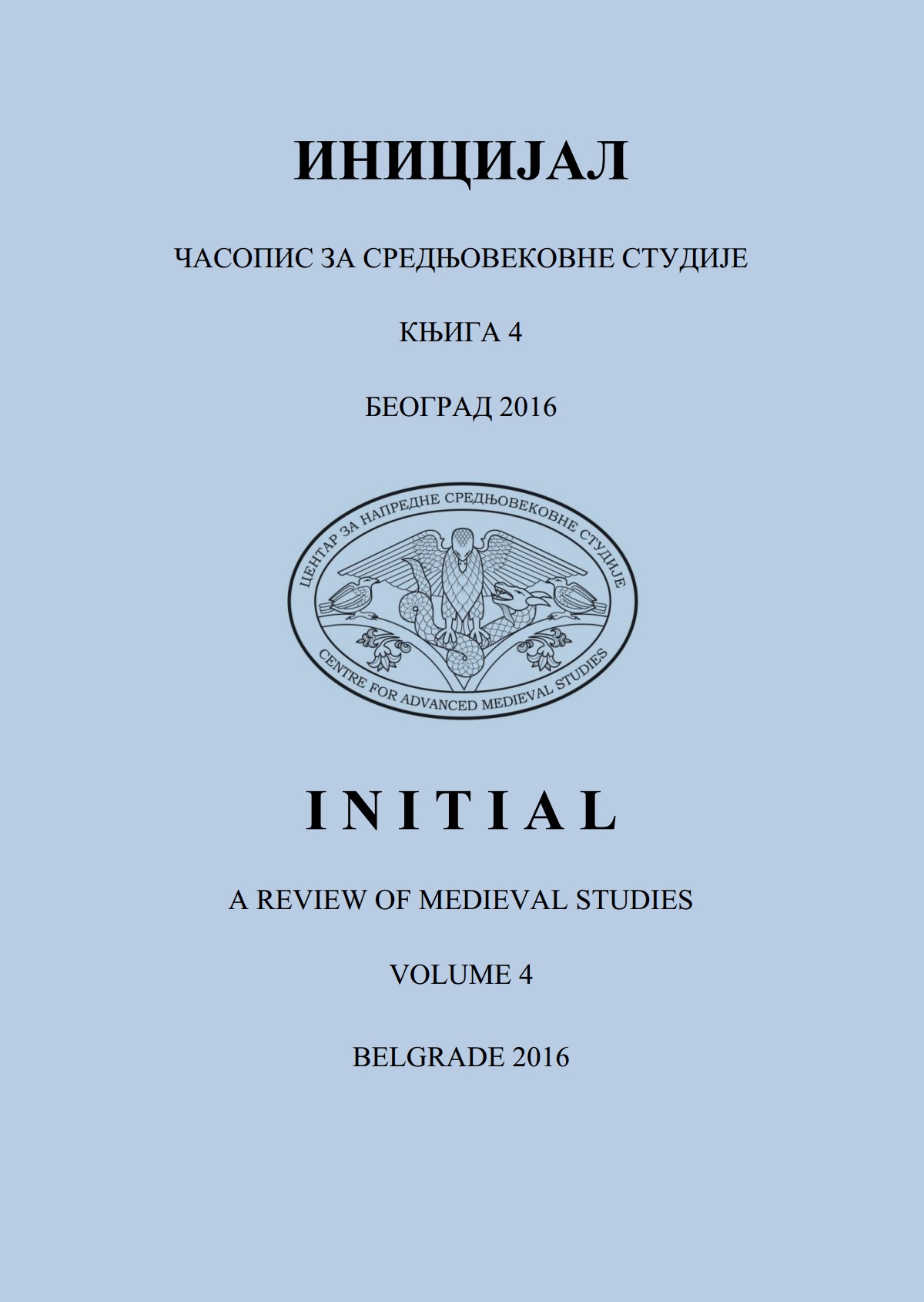Über den Status Einiger Urkunden des serbischen Kaisers Stefan Uroš (1355–71): Ein Beitrag zur Kanzleiforschung
On the Status of Several Charters of Serbian Emperor Stefan Uroš (1355–71): A Contribution to the Research of the Royal Chancery
Author(s): Žarko VujoševićSubject(s): History, Middle Ages, 13th to 14th Centuries
Published by: Центар за напредне средњовековне студије
Keywords: emperor Stefan Uroš; charters; diplomatic status; seal; watermark; royal chancery
Summary/Abstract: The paper discusses the issue of the diplomatic status of several charters of emperor Stefan Uroš (1355–71) which have either been categorised as copies or their status as originals remains disputed on account of the absence of seals and any traces of sealing, as well as the “year of production” of their watermarks. The documents under study are six charters from the archive of the monastery of Hilandar: for the metropolitan Cyril (1356); on the donation of the abandoned village of Patrikijevo (1360/61, two copies); on a donation by župan Vukoslav (15 October 1360); for čelnik Musa (15 July 1363); on a donation by the Branković brothers (11 March 1365); and on a donation by vojvoda Nikola (1366). The analysis of the documents, whose colour photographs are appended, involves a comparative examination of three documents from the Dubrovnik archives issued in 1357. It is argued that the watermark and seal cannot be taken as firm criteria for establishing originality in this material because: 1) dating by watermarks can only provide rough estimates, and it is therefore hardly possible to speak of their “year of production”; 2) it is not clear whether seals were at all a mandatory instrument of validation of the charters issued by emperor Uroš (as well as of other Serbian authors). Consequently, the Hilandar documents of 1356, 1363, 1365 and 1366, incontestable in their other diplomatic features, should be considered as originals, while the presumption of originality of one of the two copies of the 1360/61 charter and the document of 15 October 1360 can be confirmed only after further examination of their content and the circumstances in which they were created. Finally, it is proposed that the writing medium (paper) and the signature (as a rule in the auctor’s own hand) are more reliable originality criteria for the charters of emperor Uroš. The contribution also argues for a reconsideration of the hypercritical approach to medieval Serbian documents which is based on the presumed existence of an organised royal chancery with well-established and faithfully implemented practices in composing documents, so that diplomatic analysis may be placed in a more realistic historical and legal context.
Journal: Иницијал. Часопис за средњовековне студије
- Issue Year: 2016
- Issue No: 4
- Page Range: 109-124
- Page Count: 16
- Language: German

